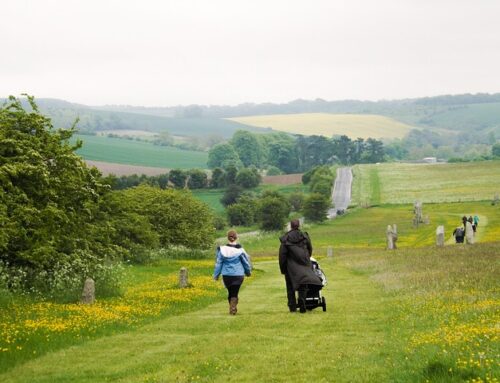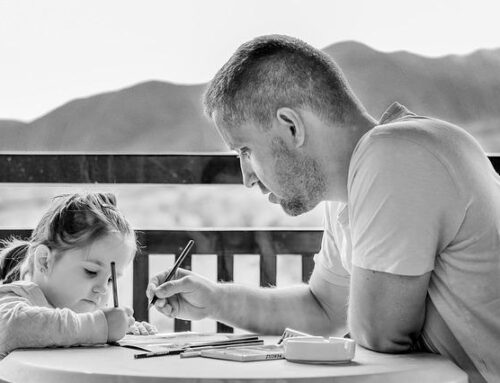There once was a scientist named Charles Darwin. He is best known for writing a book entitled, “The Origin of Species.” Well, that’s probably what most people know as the title. The full title is On the Origin of Species by Means of Natural Selection, or the Preservation of Favoured Races in the Struggle of Life. One of the main ideas that people have used from this book is that of “Survival of the Fittest.” What isn’t commonly known is that Darwin was not the sole creator of this idea. A similar idea was also created by a member of the common class of that day’s English society. To make a long story short, Darwin’s mentors were sent that similar theory by Alfred Russel Wallace. However, Wallace’s focus was on strengthening the weaker parts of society to ensure a community’s survival. Darwin and Wallace were both given credit for the idea stating that a society is as strong as its weakest link, therefore creating a need to strengthen such links. This was the “Darwin-Wallace Theory.” It was later that Darwin’s original idea was given center stage, Wallace was edged out, and the theory’s focus shifted to eliminating weak links in order to strengthen the rest of society. Therefore, the concept of “Survival of the Fittest” became most prominent.
A twist to this story is that before Darwin’s death, he wrote another book entitled, “The Descent of Man.” In this book Darwin focused on the adaption of humans in order to survive. It was more focused on cooperation as opposed to competition for the survival of a species. This is where this blog post starts, on the principles of cooperation and compassion. This creates the need for us to understand that we need one another to cooperate in order to be successful in life. Thus, cooperation and compassion are not terms synonymous with enabling and/or allowing.
One of my favorite authors, Gregg Braden, travels the world to learn and write about science, spirituality, and how they support one another. In 2005, one of his research trips led to visiting many remote monasteries in search for answers to questions that shed insight onto who we are, why we are here, and how we can relate better to one another. Okay, yes, I like reading nonfiction books like these for fun. Many people read to escape this world for a while by retreating into a fantasy, and I try to feed my inner nerd.
Now, back to the purpose of this blog post. Gregg Braden, in his book The Divine Matrix, was trying to answer two questions: “What connects us with one another, our world, and the universe,” and “What’s the ‘stuff’ that carries our prayers beyond our bodies and holds the world together?” The answer that he received by a Tibetan abbot was, “Compassion.” When Gregg searched for more clarification on that answer, he was met with, “Compassion is what connects all things.”
A few days later, Gregg interviewed another high-ranking monk in a different monastery. This time he applied the answer from the previous conversation to this one. “Is compassion a force of creation, or is it an experience?” The answer to this question was, “It is both. Compassion is both a force in the universe as well as a human experience.”
This led me to think about how this is witnessed in our current world. If compassion was the force that holds this universe together, then it would be seen in nature, right? If this was true, then I could see this truth in my garden, if I was skillful enough to not kill every plant that I planted. Needless to say, I don’t have a garden. The next closest thing would be to traverse a trail in a local state park. Surely, I would be able to witness organisms supporting one another in what’s called a forest. Well, what I did witness was an ecosystem whose organisms were living in balance, and not destroying one another as they competed for resources. This cooperation doesn’t necessarily support the idea that competition is the foundational basis for nature.
Let’s make this next example more personal. If you can’t make it outside to a park or wooded area, look no further than your own body. It is estimated that the human body houses, 30 trillion cells on average. Each of these cells have organized themselves enough to be able to form the organs in your body. Each organ works with the others to sustain your body’s existence. I can’t think of any better teamwork than that! Our bodies would not be possible if our cells were competing with one another.
Let’s define compassion. Compassion defined by Merriam-Webster is “sympathetic consciousness of others’ distress together with a desire to alleviate it.” This is working together to help others and lift others up. This is not tearing others down and degrading them. This is also not the enabling of others at the cost of yourself either. Compassion is teaching, healthy boundary setting, supporting, and advocating. Compassion is not doing for others but teaching and supporting them to do for themselves. Through boundary setting and teaching skills, you are being compassionate and caring. As the old adage goes, you are teaching someone how to fish as opposed to handing them a fish dinner.
It is through this compassionate way of existence; we are supporting one another to be the best versions of ourselves. We are strengthening ourselves as a society so that we can ensure our survival and health. Through compassion, we are recognizing and honoring the connection that we have with one another, and at the same time we are honoring and respecting ourselves. By dishonoring one another and using the antiquated belief that in order to survive, we need to eliminate others who don’t serve us, we are dishonoring ourselves and hurting our chances of being successful in our personal lives, as well as community. Without the practice and experience of compassion, we find ourselves living in a perception of a separation of one another; thus, leading to anxiety, depression, fear, anger, and potentially the need to self-medicate in order to cope (addictions). We are social creatures. The idea that we must eliminate those who are deemed inferior as opposed to support and build up those who need assistance, we do a disservice to our true nature of needing connection and compassion.
In order to support this notion of compassion, here are a few ways in which you can foster your relationships with others and with ourselves.
- Asking for help is a source of strength. It means that you are aware of your limitations. Would you go to a pediatrist because you have a tooth ache? Would you then blame the pediatrist for being a bad doctor because he referred you to a dentist? Of course not! That doctor would be praised for recognizing his limitations. Ethics would mandate he make the referral. Knowing your limits occurs with more self-awareness.
- When working with children it is important to identify and foster strengths as opposed to focusing solely on weaknesses. Yes, we need to focus on areas of improvement, but we make a mistake if those areas as the only ones given attention. It is important to foster what is done well. When you apply strengths to situations where you struggle, creativity enters the equation. Strengths are transferable in life. That’s why metaphors are so helpful. Using someone’s strength to help them relate to a situation where they currently struggle can open doors to new possibilities in problem-solving.
- When you do for others, you also do for yourself. However, I must note that the origin of this point must come from a place of wanting to do something because you can, as opposed to needing to do something for someone because you have integrated the identity of doing for others as who you are and you have a need to prove your self-worth. As Robert Holden said, “If you think something missing in your life, it’s probably YOU.” If you think there isn’t enough compassion in this world, then act more compassionately. If you think there isn’t enough kindness in this world, be more kind. When you give out positive feelings through positive behavior, you feel it in return. When you give out negative feelings, you feel a return of negative feelings.
- Teaching, not doing, is a form of compassion. Not doing something for someone can help that person learn to do it for themselves. Teaching in a kind way, and not with sarcasm or resentment, is where this act becomes an example of compassion.
- Saying “No,” in order to set a healthy boundary. Knowing your limits and saying “no” when it is appropriate and necessary for your own mental wellbeing.
- Setting a healthy boundary is more than just learning how to say “no.” It demonstrates that you have faith that someone else can learn to do for themselves, AND it demonstrates that there is a healthy level of self-respect that you have for your own needs. I can write a book just on this point alone. It is important to remember that setting healthy boundaries teaches others to set healthy boundaries for themselves as well. It starts with your self-respect, and it continues into you teaching others to do the same for themselves.
- Lastly, you can always call The Center for Trauma, Stress, and Anxiety a call at (443) 567-7037 to speak to a therapist to learn more information.





Leave A Comment